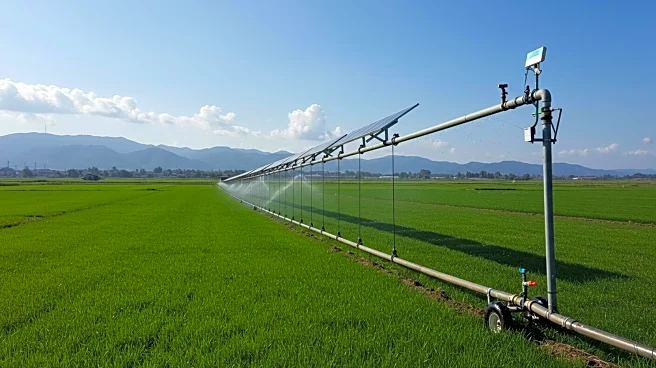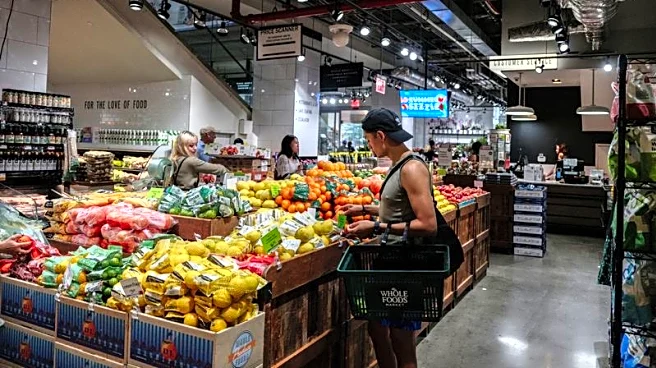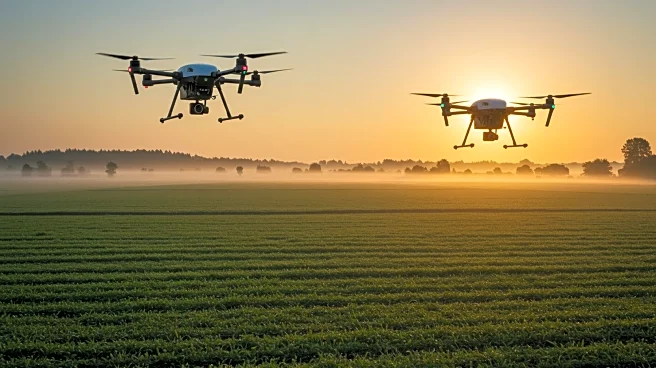What's Happening?
Smart farming techniques are revolutionizing rice production in Africa, particularly through the Smart Valleys initiative by Africa Rice. This method, supported by Japan's agriculture ministry, transforms underused inland valleys into fertile, flood-resistant farms, significantly increasing yields and income for farmers like Salmata Ouattara in Ivory Coast. Despite these advancements, sub-Saharan Africa still imports 40% of its rice, primarily from Asia, due to erratic rainfall and other production challenges. Africa Rice aims to achieve continental rice self-sufficiency by 2030 by developing drought-resistant varieties and promoting nutrient-rich rice products.
Why It's Important?
The adoption of smart farming techniques is crucial for addressing food security in Africa, where rice is a staple food. By increasing local production, countries can reduce dependency on imports, which is vital for economic stability and resilience against global market fluctuations. The initiative also supports sustainable agricultural practices, which are essential in mitigating the impacts of climate change on food production. This shift towards self-sufficiency can enhance the livelihoods of farmers and contribute to broader economic development across the continent.
What's Next?
Africa Rice continues to focus on developing climate-resilient rice varieties and promoting sustainable farming practices. The success of these initiatives could lead to increased investment in agricultural technology and infrastructure, further boosting production and self-sufficiency. Collaboration with international partners, such as Japan, may expand to include more countries and regions, enhancing the overall impact of smart farming on Africa's agricultural landscape.
Beyond the Headlines
The move towards smart farming in Africa highlights the importance of innovation in agriculture as a response to climate change. It underscores the need for international cooperation in developing and implementing sustainable solutions that can be adapted to local contexts. The initiative also reflects broader trends in global agriculture, where technology and sustainability are increasingly intertwined in efforts to ensure food security.













